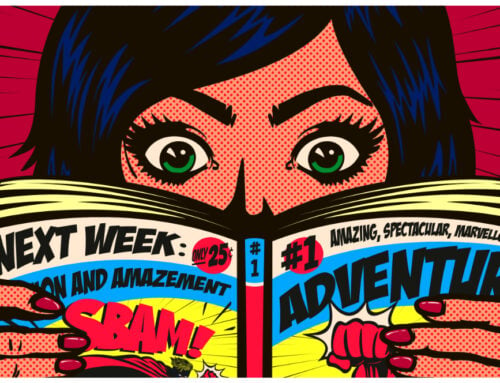Children’s books have the power to transport us to different worlds, introduce us to new characters and teach us valuable lessons. But what makes these stories even more special is when they are translated from their original language into English. It opens up a whole new world of literature for both children and adults alike.
A Gateway to Different Cultures
One of the most significant benefits of translated children’s books is that they offer a glimpse into different cultures and perspectives. Reading stories from other countries can spark curiosity in young minds and encourage them to learn more about the world around them.
Through these books, children can discover new traditions, customs, and beliefs. They can also develop empathy towards people from different backgrounds and understand that despite our differences, we are all connected by our shared humanity.
Challenges of Translation and Adaptation
While translated books offer numerous benefits, there are also challenges that come with the process of translation and adaptation. Translators must strike a balance between staying true to the original story while making it accessible and readable for an English-speaking audience.
Finding the Right Words
It requires skill and creativity to convey the essence of a story while still maintaining its cultural nuances. Adaptation is also necessary when translating children’s books, as some elements may not be suitable or understandable for a different audience. For instance, in Japanese folklore, there are many mythical creatures that may not exist in Western cultures. Translators must find ways to adapt these stories without losing their charm and uniqueness.
Learning a New Language

Another advantage of reading translated books for children is the opportunity to learn a new language. Many parents who want their children to be bilingual or multilingual often turn to translated books as a way of introducing new languages.
These books provide an excellent starting point for young readers as they are usually written in simple language and accompanied by illustrations that help with understanding. It also allows children to compare the English translation to their native language, which can enhance their comprehension skills.
Exposure to Different Writing Styles
Each country has its own unique writing style, and translated books give us a taste of these diverse literary techniques. For instance, Japanese books for children often incorporate elements of poetry and haikus, while Scandinavian stories tend to have a more relaxed and whimsical approach.
Reading for Fun
Exposing children to various writing styles from an early age can broaden their literary horizons and make reading even more enjoyable. It also helps them develop a critical eye for storytelling and appreciate different forms of expression.
Classic Mythologies and Stories
Many translated books for children are based on traditional folktales and mythology. These stories have been passed down for generations, and by reading them in English, children can learn about the myths and legends of different cultures.
Valuable Lessons
These tales often have a moral lesson intertwined within them, teaching children important values such as bravery, kindness, and perseverance. They also shed light on various cultural beliefs and practices that may be unfamiliar to young readers.
Connecting with Heritage
For families who have immigrated to an English-speaking country, translated children’s books can help keep their culture alive. It allows parents to pass down their heritage to their children through literature while still promoting English literacy.
Parents can also use these books as a tool to teach their native language to their children, ensuring that they never forget their roots. Additionally, it can create a sense of pride in children as they read stories from their home country and see themselves represented in the characters.
Explore Different Cultures Through Books and Stories
In today’s globalized world, it is essential to expose children to diverse cultures and people. And what better way to do that than through translated books?
These books not only provide a fun and engaging reading experience but also open up a whole new world of knowledge and understanding. So why not pick up a translated children’s book the next time you’re at the bookstore? Who knows, you might just discover your new favorite story. No matter the language it was originally written in. Because after all, stories have no borders or boundaries – they are meant to be shared and enjoyed by all.
Encouraging a Love for Reading
Reading translated books for children is also an excellent way to spark a love for reading in young minds. Many parents struggle to find books that will captivate their child’s interest, but with translations, there is a vast selection of stories to choose from.
As children read more and more translated books, they may become interested in learning about other cultures and languages. This curiosity can lead them down the path of becoming lifelong readers and global citizens.
Bringing Classic Stories to New Audiences
Translating books also allows classic stories to reach a wider audience. Many beloved tales, such as “The Little Prince” by Antoine de Saint-Exupéry and “Pippi Longstocking” by Astrid Lindgren, were originally written in languages other than English.
By translating these stories into English, they can be enjoyed by readers from all over the world. It also ensures that these timeless classics continue to be passed down to future generations.
New Stories from Other Countries

In addition to bringing well-known stories to new audiences, translated children’s books also introduce us to lesser-known tales from other countries. These stories may have never reached English readers if not for translation.
For example, “Asterix and Obelix” by René Goscinny and Albert Uderzo was a popular comic book series in France but only gained widespread recognition in the English-speaking world after it was translated. This not only expands the variety of literature available to children but also promotes cultural exchange and understanding.
Find Your Story at Clevo Books Downtown!
In today’s increasingly globalized world, translated children’s books play an essential role in promoting diversity and cross-cultural understanding. They offer readers a gateway to different cultures, languages, and writing styles, making reading an enriching experience.
Come read all the different cultures and languages translated into English at Clevo Books! Our bookstore in the Arcades in Downtown Cleveland offers the biggest range of translated books from all around the world. Not in Northeast Ohio? No worries, you can check out our online bookstore to browse our collection as well. Visit our website or call (216) 354-5354 to find out more!

We would love to hear from you! If you have any questions or comments, please feel free to contact us.
530 Euclid Ave #45a Downtown Cleveland, OH 44115






